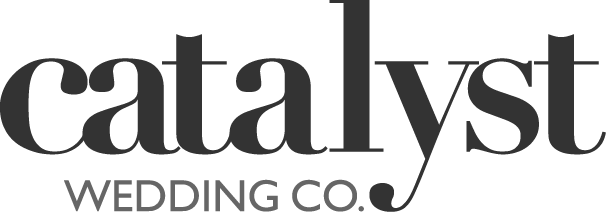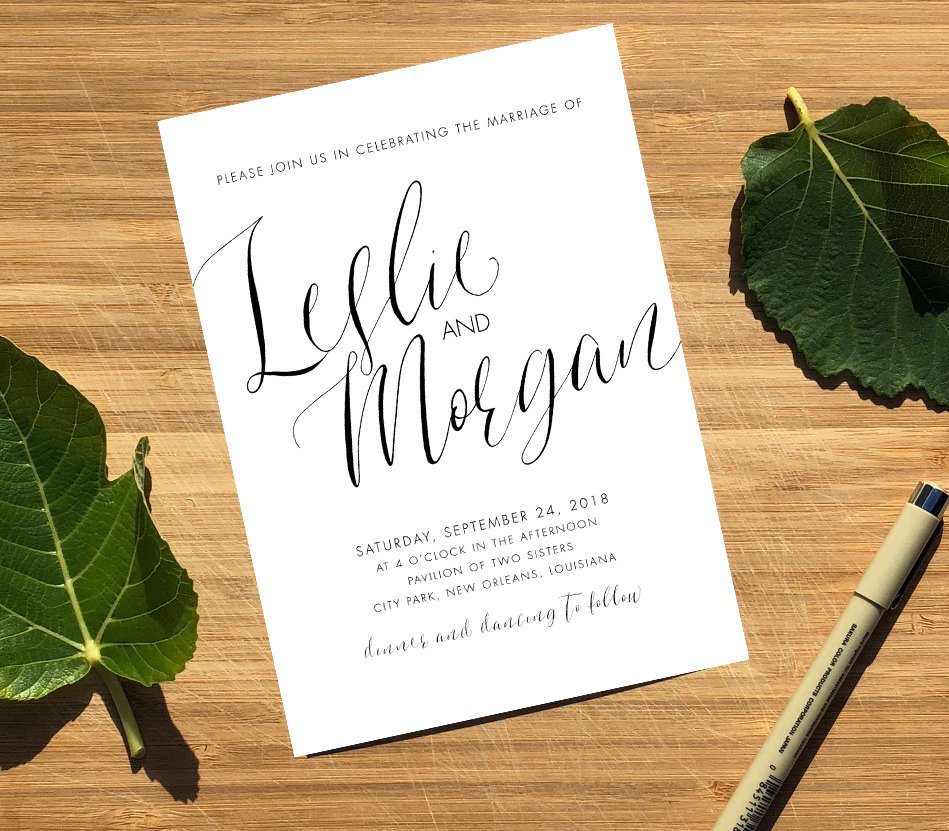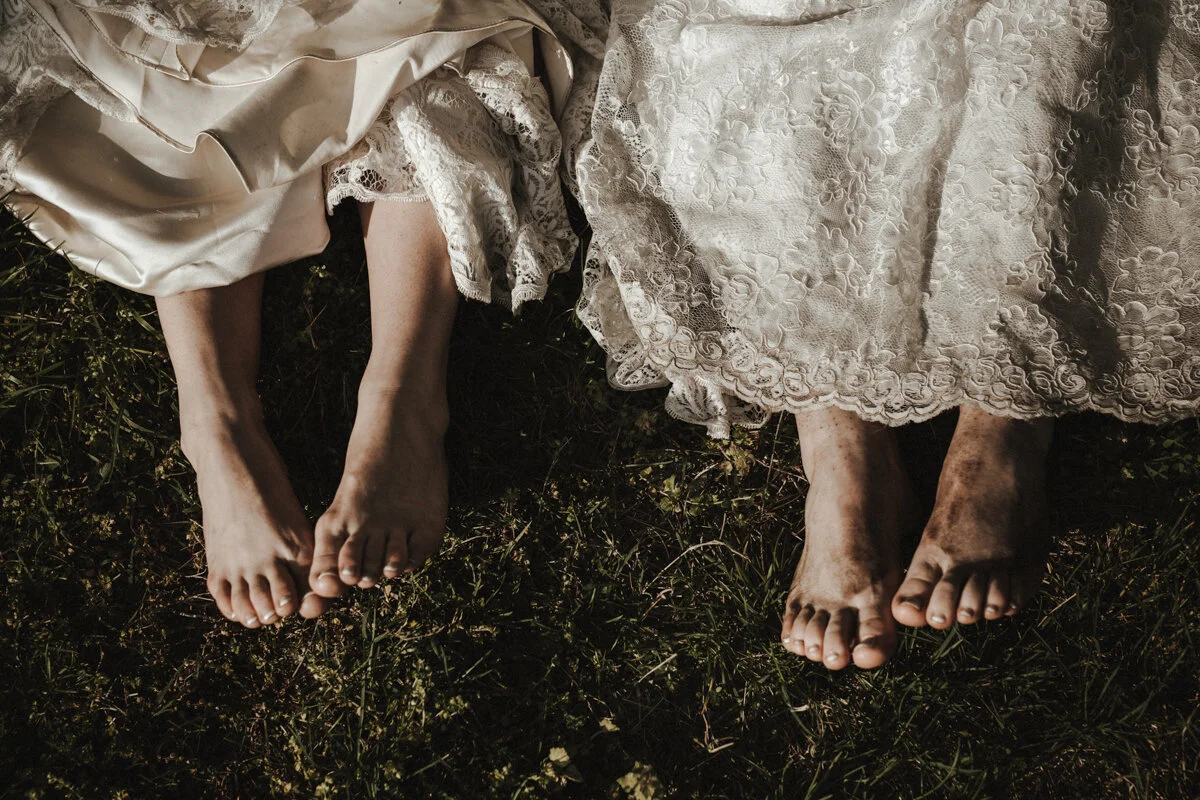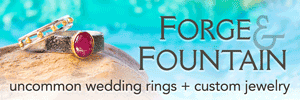8 Things to Know About Print-At-Home DIY Wedding Invitations
/Catalyst Wedding Co. may receive compensation or products from companies mentioned in this article. This helps support our site.
While I love letterpress paper goods, custom designed letterpress wedding invitations won’t be in every couple’s budget. The good news is that there are more affordable wedding invitation options than ever before, with companies like Minted and Paper Source offering custom invitations at a fraction of the cost.
If you want to go one step further to reduce your costs around wedding invitations, printing your invitations at home is one great option to consider, but a few small mistakes could lead to a serious Pinterest Fail situation. Before you commit to printing your wedding invitations at home, consider these 8 guidelines.
1. Unless You’re a Designer, Buy a Template
Listen, I have years and years of graphic design experience, and there were still many times in the process of designing and making my own wedding invitations that I wanted to scream. Do yourself a huge favor and buy a template from a designer. Etsy is absolutely swimming with different options in almost any style you could imagine. But before you commit to one, read on for more guidelines to consider.
2. Rethink Templates with Designs That Go to the Edge of the Page to Save Time
If you’ve ever tried to print out a photo on your home printer, then you know that no home office printer is going to accommodate full bleed designs, also known as designs that go to the edge of the page. In order to achieve the look of these types of invitations, you’ll need to do quite a bit of trimming and cutting to get the designs to look right. If you’re a skilled crafter, then this won’t be a problem of skill, but it might be an issue of time. The only way to ensure that the invitations are cut consistently and cleanly is to cut each one individually, and that can take a whole lot of your precious time.
While full bleed design templates like the one below are absolutely lovely, it’s important to consider the extra effort they involve.
3. Shop the Paper Source Paper Bar for High Quality Paper
Don’t want to deal with cutting any 8.5” x 11” sheets of card stock down to size? If so, the Paper Source Paper Bar is your new best friend. Paper Source offers factory cut card stock and envelopes in a variety of standard sizes and dozens of colors and textures. You can pick colors that coordinate with the rest of your wedding design and you can even choose from Luxe, eco-friendly, shimmer, and cotton paper options. I can personally vouch for the Luxe Cream Cards, which I chose for my own wedding invitations.
Jen’s DIY Wedding Invitations. Photo by Betty Clicker Photography.
If you choose a template that is formatted to the size of the finished card, their flat card options are the way to go. If you want the same quality, but are using a template that is designed for an 8.5” x 11” piece of paper, you can still buy their quality card stock in full sheets and cut them down. Knowing you are going to get color, size, and paper quality consistency across all of your invitations is so important when you are taking the DIY route.
4. Double Check What Content Is and Isn’t Editable
Before you buy a template, make sure you understand what text is and is not editable in the template. Many templates include heteronormative language, like “Mr. & Mrs.”, or even gender normative language, like “Maid of Honor”, that you might want to change, only to realize that this text is a static part of the template. Obviously, we don’t like when template designers do this. It’s usually a signal that they are not a LGBTQ+ friendly vendor, so we’d go so far to consider this a disqualifying factor. Even if you are a cisgender hetero couple, I suggest you take a look at each template carefully and say no to designers who try to hard code heteronormativity into their designs.
5. Make Sure You Have the Right Software to Edit the Text
This is probably one of the most important things to consider, as most Etsy retailers won’t offer refunds on digital template downloads. Read the product description in full, and make sure you understand what software is needed to edit the template. Most use either Microsoft Word or Adobe Acrobat, but if you have a Mac and use Pages, you might run into issues. Be sure that you have the right software and you feel comfortable using that software before committing to a template.
6. Double Check the Font Fine Print
Fonts can be tricky beasts. If you buy a template that is a Microsoft Word Document, but you don’t have the necessary fonts downloaded on your computer, chances are you are going to end up with a template that looks different than what was advertised. Most vendors will detail directions around fonts in the description, so make sure you have a good understanding of the necessary fonts before you buy. Sometimes vendors will state that the fonts are freely available, so be sure to clarify whether that means you’ll be receiving the fonts as part of the purchase, or if you have to find the fonts, download them, and install them yourself.
This is often the advantage of buying a template that is in PDF format and can be edited with Adobe Acrobat. While many people aren’t as familiar with Adobe Acrobat and its editing capabilities, or you might not even have it on your computer, it does allow fonts to be embedded in the document. This usually means that you can edit without having to worry about whether or not you have the right fonts installed. Always be sure to double check with the Etsy retailer.
7. Pay a Little Extra and Let the Pros Edit Your Template
If dealing with fonts and software is making your brain hurt, it is OKAY. Many template designers will edit the template for you for a very minimal fee. Emily Frock Graphic Design edits all of her templates herself before sending them to you so you’ll always get exactly what you want.
8. Colorful Templates Will Require More Printer Ink Cartridges
Color is beautiful, but color ink is costly! Factor in the cost of at least one or two additional color ink cartridges before you commit to a colorful design. This is where colorful paper from the Paper Source Paper Bar can really save the day! You can add color without the added cost of ink.
JEN SIOMACCO
Jen Siomacco is the CEO and Creative Director of Catalyst Wedding Co. She works to mesh together her love of feminism, love stories, equality and design into the layout and brand of Catalyst while she sits on her couch and snuggles up with her SUPER lazy cats.



























